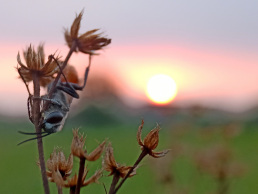

Lesson Plan:Nature During a Solar Eclipse
Created in collaboration with Tracey Kline, Lynn Public Schools, Lynn, MA
Grades 6-8, NGSS: MS-ESS1-1 Earth’s Place in the Universe
NGSS STANDARD
MS-ESS1-1: Develop and use a model of the Earth-Sun-Moon system to describe the cyclic patterns of lunar phases, eclipses of the sun and moon, and seasons. (Clarification Statement: Examples of models can be physical, graphical, or conceptual.)
LEARNING/ CONTENT/ LANGUAGE OBJECTIVE:
Predict
Students will be able to predict the sounds and sights in their location during the solar eclipse.
LANGUAGE DEMAND:
Essential / Academic Vocabulary: diurnal, nocturnal, camouflage
LESSON STRUCTURE
Lesson Beginning / Frame the Learning
(Clear entry routine, Do-Now, Activator, etc.; Frame the lesson by sharing and explaining lesson objective, agenda, and goals)
Differentiation
What supports and scaffolds am I providing based on the WIDA can-do descriptors?
![]()
![]()
![]()
![]()
![]()
![]()
![]()
![]()
![]()
![]()
![]()
- How would you observe animals or your environment during a solar eclipse using all of your senses?
- What would you listen for?
- What would you look for?
- What would you try to feel/touch?
- Recording the information you gather during your observations is important. How or where would you record your information during scientific investigation?
- Click Multi-sensory Eclipse Observations Do Now for videos.
- Lesson Slides provided in Lesson Resources below.
![]()
![]()
![]()
![]()
![]()
![]()
![]()
![]()
![]()
![]()
![]()
![]()
![]()
![]()
![]()
![]()
![]()
- Provide word bank and sentence starters for students who need it.
I would listen for …
I would look for…
I would try to feel/touch…
Reference: WIDA can-do descriptors
Lesson Middle
(I do- teacher directed; We do- practice with the teacher; You do- partner/small group application with teacher support)
Differentiation
What supports and scaffolds am I providing based on the WIDA can-do descriptors?
* Revisit language objective and agenda; formative assessment- check for understanding (intervention and extension opportunities available)
![]()
![]()
![]()
![]()
![]()
![]()
![]()
![]()
![]()
![]()
![]()
![]()
![]()
![]()
![]()
![]()
![]()
![]()
![]()
![]()
![]()
![]()
![]()
![]()
![]()
![]()
![]()
![]()
![]()
![]()
![]()
![]()
![]()
- Graphic Organizer provided in Lesson Resources below.
![]()
![]()
![]()
![]()
![]()
![]()
![]()
![]()
![]()
![]()
![]()
![]()
![]()
![]()
![]()
![]()
![]()
![]()
![]()
![]()
![]()
![]()
- Research & Predict Handout provided in Lesson Resources below.
![]()
![]()
![]()
![]()
![]()
![]()
![]()
![]()
![]()
![]()
![]()
![]()
![]()
![]()
![]()
![]()
![]()
![]()
![]()
![]()
![]()
![]()
![]()
![]()
![]()
![]()
![]()
![]()
- Partner earlier proficient ELs with later proficient ELs or native English speakers.
![]()
![]()
![]()
![]()
![]()
![]()
- have students draw a picture of each animal and plant and label/list what they see.
![]()
![]()
![]()
![]()
![]()
![]()
- Provide Sentence Starters
- The ___ has ___ ___ , ___ ___, and ___ ___.
- It sounds like a ______ .
Yes, it surprised me. OR No, it didn’t surprise me. - I think it would be easy to see a ___ because _______________ OR I don’t think it would be easy to see a ___ because _____________________ . I think it would be easy to hear a ___ because __________ OR I don’t think it would be easy to hear a ___ because __________ .
- During the eclipse I think a ___ might __________ .
Reference: WIDA can-do descriptors
Lesson End
(You do- independent application; Summarize learning; Clear exit routine)
Differentiation
What supports and scaffolds am I providing based on the WIDA can-do descriptors?
* Formative assessment-exit ticket, check for understanding, etc.
![]()
![]()
![]()
![]()
![]()
![]()
![]()
![]()
![]()
![]()
![]()
![]()
![]()
![]()
![]()
![]()
![]()
- Provide Sentence Starter
I think a ___ will _______ because _______ .
Reference: WIDA can-do descriptors
FORMATIVE ASSESSMENT
How am I measuring success? (Connection to your Content/ Language objective)
- Teacher can measure student success by checking students’ research handouts for accurate information.
- Teacher can measure student success by looking over students’ predictions and checking for predictions that are possible.
LESSON RESOURCES
- Nature During a Solar Eclipse LESSON PLAN (Google Doc): When you open this link you will be prompted to make a copy of the Google document. This will allow you to download, print, and/or edit the above lesson plan to best meet your needs.
- Nature During a Solar Eclipse SLIDES (Google Slides): When you open this link you will be prompted to make a copy of the Google slides. This will allow you to use and edit the lesson slides to best meet the needs of your classroom.
- Nature During a Solar Eclipse Brainstorm Notes Graphic Organizer HANDOUT (Google Doc): When you open this link you will be prompted to make a copy of the Google document. This will allow you to download, print, and/edit the Google document to best meet the needs of your classroom.
- Nature During a Solar Eclipse Research & Predict Activity HANDOUT (Google Doc): When you open this link you will be prompted to make a copy of the Google document. This will allow you to download, print, and/edit the Google document to best meet the needs of your classroom.
LESSON FEEDBACK
We want to hear from you! If you used this lesson plan or any of these resources, please submit lesson plan feedback via a short survey!